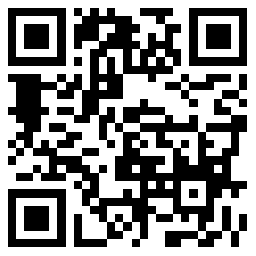Internet of words: Glossary of terms related to Internet of things
Published:2019-12-18 13:49
What's the point of connecting all devices to the Internet? Does it contain real value? Just because you can, does it mean you should? -- Matt cicciari
After a long time in the Internet, you will find that there are too many animes mocking the Internet of things (of course, I mean the devices that are definitely connected to the Internet, and this kind of devices can send and receive data through this connection). The common title is "we have to go out for dinner", because "the refrigerator and oven ignore each other". It's easy to laugh at toothbrushes and smart tampons that can play videos, but don't get distracted by these dumb devices and forget the serious side of the Internet of things. Gartner, a market research firm, predicts that more than 6 billion nodes will be connected to the Internet this year, while a report jointly released by DHL trend research and Cisco consulting services estimates that the number of nodes will be 15 billion. There are many "objects" in the Internet of things. The only trend that everyone can agree with is that the number of nodes will become larger and larger. The good news for language observers is that with the growth of the Internet of things, there are more jargon terms associated with it. The complete glossary of terms related to the Internet of things can be published in the column for a whole year, so I only choose some noteworthy new words to write.
A major part of the Internet of things is the wireless transceiver equipped with sensors, which can exist in almost any physical entity such as household appliances, instruments, clothing, mechanical equipment and buildings. Of course, "wireless transceiver equipped with sensors" is a bit awkward, so this kind of Internet of things node is called dust (short for mote, remote). Every dust like this needs to have address ability, that is, its state not only has unique recognizability, but also can be found. The system that manages addressing capabilities is called identity of things (idot).
The Internet of things in industrial environment is called industrial IOT (iiot), which is usually composed of information physical system combining network and mechanical parts. When it comes to cloud networks, the system that manages services and data delivery is called things as a service (TAAs).
Cars with thousands of sensors installed will not only communicate with the mothermachine (i.e. the manufacturer), check and update, but also communicate with the vehicle to vehicle (V2V), vehicle to person (V2P) and vehicle to infrastructure (V2I). Thus, Internet of cars (Internet of cars, the more popular English way of writing is Internet of vehicles). As external and internal sensors form our body area network, we will also conduct e-health monitoring every moment. This is likely to mean that it companies that have just become accustomed to byod will soon have to prepare for byow. Where users control data and it controls security, these devices may have to become co owned, personal use (COPE) devices.
The so-called smart TV and smart refrigerator are just a part of the rear of the front of the Internet of things. Soon, home automation will cover our homes intensively, including Internet security systems, automation systems, robots and so on. We will also establish continuous contact with the social Internet of things (SWOT), that is, the social network perception part of the Internet of things. Want to watch TV programs or go to restaurants? Now you will know which friends have seen the same programs or been to the same restaurants, and whether they like it or not. This is just a small set. It also has a larger concept, crowd sensing. In a large number of smart phones and other devices that access a certain environment, many sensor data will be generated. Reading these data can obtain information about the environment, which is called swarm intelligence perception.
You can see what this will do. In the end, we will usher in the Internet of things (IOE), which will take us beyond the essence of the Internet of things machine to machine (M2M), and put people into this equation, and turn it into machine to man (m2p). Since toothbrush and tampon are only small dust in the Internet, we will soon become one of them.
Contact
Address:Room 4c10, NANDA industry university research building, No. 6, Yuexing Third Road, high tech community, Yuehai street, Nanshan District, Shenzhen
Telephone:18688922207
Mobile phone:18688922207
Mailbox:36736788@qq.com


Enter mobile version